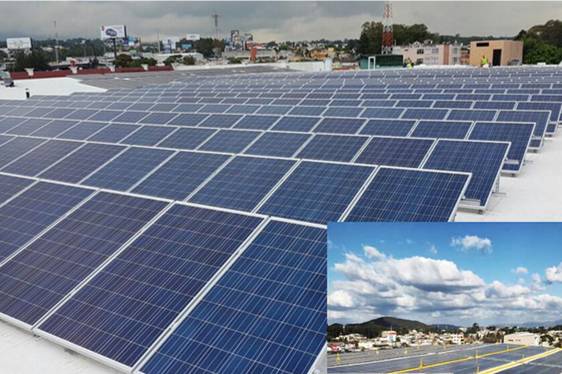Jan 25, 2021
According to a study published online in Nature EnergyCity-level analysis of subsidy-free solar photovoltaic electricity price, profits and grid parity in China, urban China's Commercial and industrial solar power systems are already cheaper than grid power. The economic incentive this implies could lead to a significant increase in the use of commercial and industrial solar systems in China in the near future.
When the price of solar power is higher than the price of grid electricity, the economic incentive to purchase solar systems decreases. In response to this situation, many developed countries have adopted the practice of subsidising solar systems. Developing countries such as China may not offer large subsidies, but the low cost of labour and system hardware may mean that the price of solar power may reach parity with grid electricity.
Yan Jingyue and colleagues at the Royal Institute of Technology in Sweden estimated the price of electricity from solar systems and total electricity output in Chinese cities and compared it to the price of grid electricity in cities; they also estimated the price of grid-scale solar power and compared it to the price of coal power. The authors found that in all 344 cities in China, commercial and industrial solar PV systems were able to generate electricity at a lower cost than grid-supplied electricity. In 22% of these cities, grid-connected solar power systems also cost less to generate than coal power.

Under the sunlight, the electricity generated by the solar cell elements is controlled by the controller to charge the battery or to supply the load directly if it meets the demand of the load, if the sunlight is not sufficient or at night the battery is controlled by the controller to supply the DC load, for solar power systems containing AC loads, an inverter is also required to convert the DC power into AC power.
Solar power is a photovoltaic technology that uses solar cell arrays to convert solar radiation into electrical energy. Solar power can be divided into grid-connected photovoltaic power generation and off-grid photovoltaic power generation according to the mode of operation.
1. Grid-connected photovoltaic power generation is a photovoltaic power generation system that is connected to the grid and delivers electricity to the grid. It is the PV hair into large-scale commercial power generation stage, grid-connected photovoltaic solar power plant to become an important part of the power industry development direction, is the mainstream trend in the development of photovoltaic power generation technology in the world today. Grid-connected system consists of solar cell arrays, system controllers, grid-connected inverters, etc.
2. Off-grid photovoltaic solar power generation refers to photovoltaic systems that are not connected to the grid for independent power supply. Off-grid photovoltaic solar power plants are mainly used in areas without electricity away from the public grid and in some special places. The stand-alone system consists of PV modules, system controller, battery bank, DC/AC inverter, etc.
How Do Solar Panels Help The Environment?
Nov. 23, 2021
Follow Us
Navigation